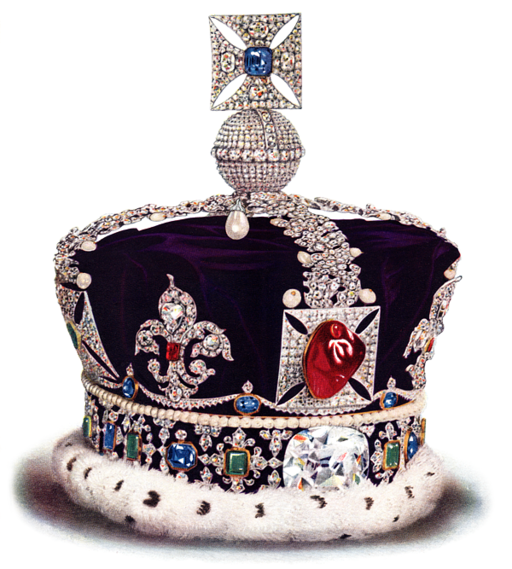
As the Coronation of King Charles III and Queen Camilla inches nearer, the historic gems that will be used in the ceremony are under the spotlight. Among those historic pieces is the Black Prince’s Ruby which sits in the Imperial State Crown.
Located on the front of the crown, the ruby is an irregular and large cabochon red spinel weighing 170 carats or, 34 grams. Like the Monarch on Coronation day, it has a center spot as it’s located in the cross pattée above the Cullinan II diamond. Like the crown, the jewel itself is historic and dates back to the 14th century.
In the middle of the 14th century, the jewel was in the possession of Abū Sa’īd, the Arab Muslim Prince of Granada. During the wars between the Moorish Kingdom of Granada and the Kingdom of Castile, Abū Sa’īd began to negotiate terms with King Pedro of Castile, often referred to as Pedro the Cruel. Abū Sa’īd was killed by Pedro and the spinal was taken from his corpse.
But when King Pedro’s brother, Henry of Trastámara, rebelled against him in 1366, the Castilian king made an alliance with the Black Prince, son of Edward III of England. In exchange for England’s help, the Black Prince demanded the ruby. The gem is believed to have made its way to England although it disappears from historical records until 1415.
At the Battle of Agincourt in October 1415, Henry V of England wore a gem-encrusted helmet that included a ruby. During the fight, Henry was almost killed by the French Duke of Alençon but the helmet helped save his life. It’s also believed Richard III wore the gem in his helmet during the Battle of Bosworth in 1485, where he was killed and the throne claimed by Henry VII.
Fast forward to the 16th century and in 1521, Henry VIII’s inventory mentioned “a great balas ruby” set in the Tudor Crown. It’s believed this ruby is the Black Prince’s Ruby. The ruby remained there until the time of Oliver Cromwell in the 17th century. With the exception of several other items including the Coronation Chair, Cromwell owned the principal symbols of the monarch’s power which includes the Crown Jewels. The jewels were broken up and sold with the gold being made into coins. What exactly happened to the Black Prince’s Ruby during the Commonwealth of England is unclear. The ruby was once again in English possession when the monarchy was restored in 1660 under Charles II.
During the coronation of Victoria in 1838, the queen was crowned with a new Imperial State Crown made for her by Rundell and Bridge with nearly 3,100 gems including the spinel at the front. In her official coronation portrait by sir George Hayter, one can see the jewel on the Imperial State Crown. The crown was remade in 1937 to be lighter. A plaquette on the reverse of the gemstone signifies the crown’s history.
King Charles III will be crowned with St Edward’s Crown at the Coronation at Westminster Abbey and His Majesty will wear the Imperial State Crown as he departs the Abbey for the Coronation Procession.

